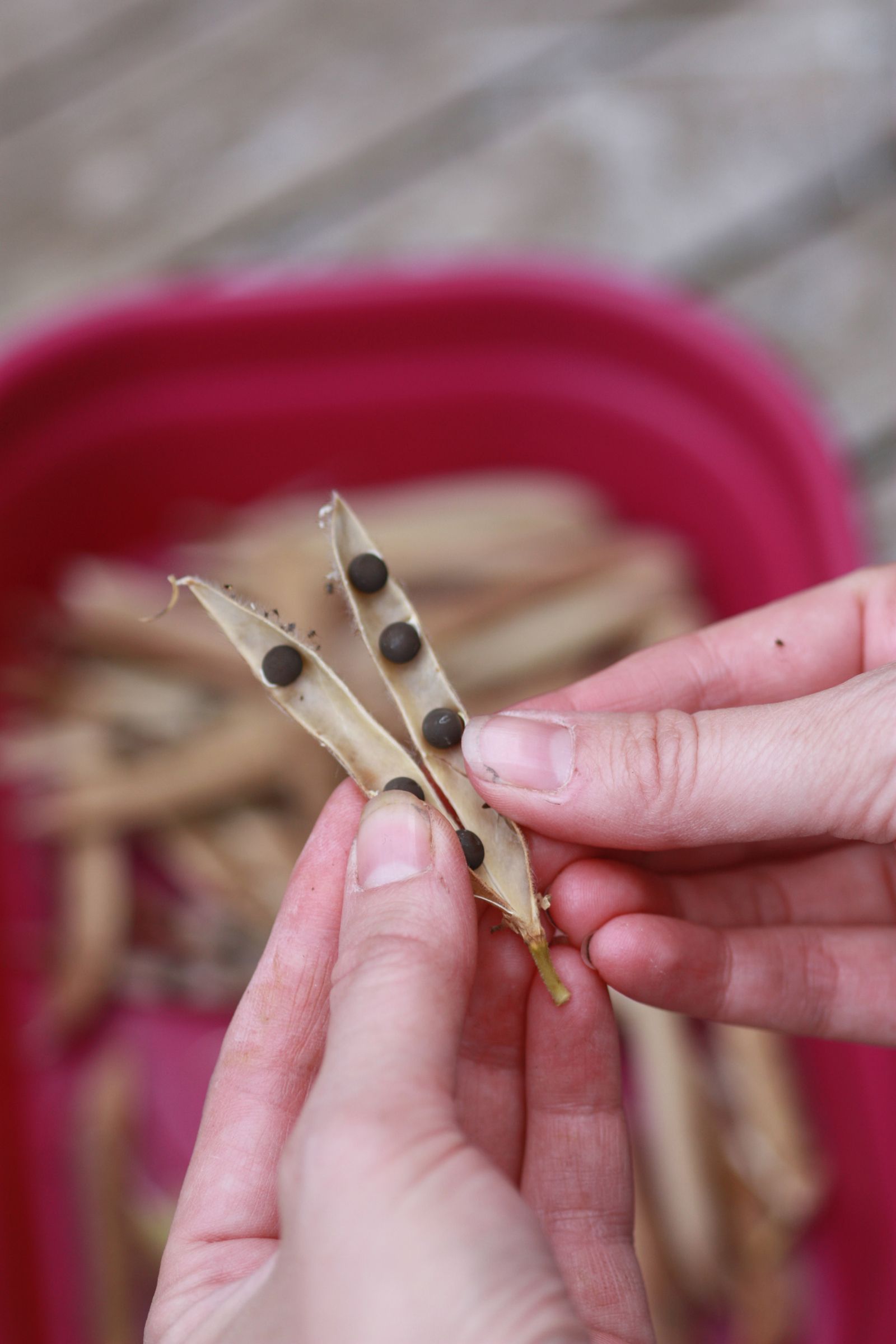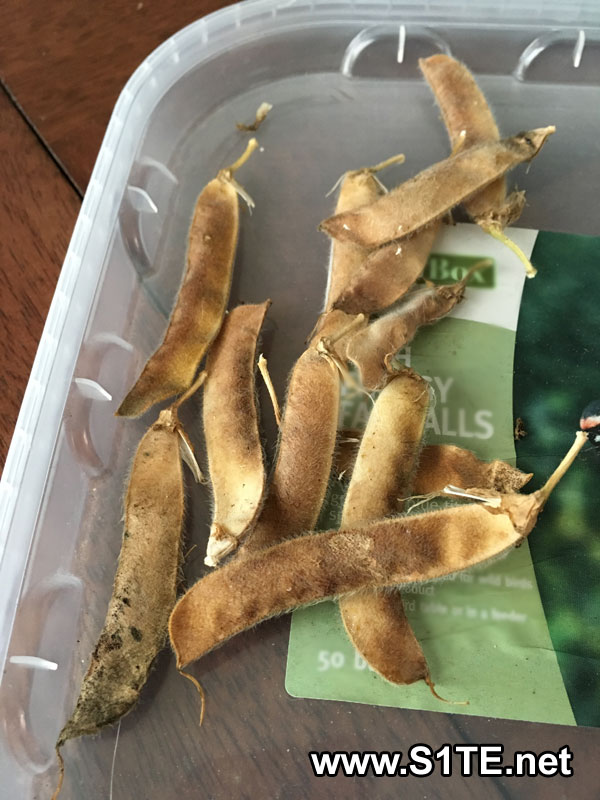When to Collect Sweet Pea Seeds
Timing is crucial when it comes to collecting sweet pea seeds. Harvesting at the right moment ensures the seeds are ripe and ready for storage. If you collect them too early, the seeds may not be fully developed, and if you wait too long, they may have already dispersed. To determine the optimal harvest time, look for signs such as the color of the pods. When they turn a light brown or beige, it’s a good indication that the seeds are mature. Additionally, check the dryness of the pods. If they’re dry and brittle, it’s time to harvest. Gently tugging on the pods can also help you determine if they’re ready. If they come off the plant easily, the seeds are ready to be collected. By paying attention to these signs, you’ll be able to collect your sweet pea seeds at the right time, ensuring a successful harvest and setting yourself up for success when learning how to collect sweet pea seeds.
Preparing Your Sweet Pea Plants for Seed Collection
Before collecting sweet pea seeds, it’s essential to prepare your plants to ensure a successful harvest. One crucial step is deadheading, which involves removing spent flowers to encourage the plant to focus its energy on producing seeds. This simple technique can increase seed production and improve overall plant health. Pruning is another critical step, as it helps to promote air circulation and prevent disease. Remove any weak or damaged stems, and trim back the plant to encourage bushy growth. Providing support for your sweet pea plants is also vital, as they can grow quite tall. Use trellises, stakes, or cages to keep the plants upright and secure, making it easier to access the pods when they’re ready for harvest. By taking these steps, you’ll be well on your way to learning how to collect sweet pea seeds and enjoying a bountiful harvest.
How to Identify and Select Healthy Sweet Pea Pods
When it comes to collecting sweet pea seeds, it’s essential to identify and select healthy pods to ensure the best possible results. Healthy sweet pea pods are typically plump, dry, and brittle, with a light brown or beige color. Avoid pods that are soft, mushy, or show signs of mold or mildew, as these can be diseased or damaged. Check the pods for any visible damage, such as cracks or holes, and discard any that are compromised. It’s also important to inspect the stems and leaves surrounding the pods, looking for signs of disease or pests. By selecting healthy pods, you’ll be able to collect high-quality sweet pea seeds that will germinate successfully when learning how to collect sweet pea seeds. Remember, the quality of the seeds you collect will directly impact the health and vigor of your future sweet pea plants, so take the time to carefully inspect and select the best pods.
The Art of Harvesting Sweet Pea Seeds
Once you’ve identified healthy sweet pea pods, it’s time to harvest the seeds. The process of harvesting sweet pea seeds requires care and attention to detail to ensure the seeds remain viable. Start by gently grasping the pod and pulling it away from the stem. Open the pod by splitting it along the seam, taking care not to crush or damage the seeds inside. Remove the seeds from the pod, and place them in a clean, dry container. It’s essential to handle the seeds carefully, as they can be easily damaged or broken. Avoid touching the seeds, as the oils from your skin can cause them to rot. Instead, use a small, dry brush or a pair of tweezers to gently manipulate the seeds. When learning how to collect sweet pea seeds, it’s crucial to harvest the seeds at the right time and handle them with care to ensure the best possible results.
Drying and Cleaning Sweet Pea Seeds
After harvesting sweet pea seeds, it’s essential to dry and clean them to prevent moisture from causing rot or mold. Spread the seeds out in a single layer on a paper towel or cloth, and allow them to air dry for several days. Stir the seeds daily to ensure even drying. Once the seeds are completely dry, remove any debris or chaff by gently blowing on them or using a small brush to sweep away any impurities. Cleaning and drying sweet pea seeds is a critical step in how to collect sweet pea seeds, as it helps to prevent the growth of mold or bacteria that can damage the seeds. Properly dried and cleaned seeds will store better and have a higher germination rate when planted. Additionally, drying and cleaning sweet pea seeds helps to preserve their viability, allowing you to store them for future use.
Storing Sweet Pea Seeds for Future Use
Once sweet pea seeds are dry and clean, it’s essential to store them properly to maintain their viability. Use airtight containers, such as glass jars or paper envelopes, to store the seeds. Make sure the containers are completely dry and free of moisture before adding the seeds. Store the containers in a cool, dry place, such as a cupboard or drawer, away from direct sunlight and heat sources. The ideal storage temperature is between 40°F and 70°F (4°C and 21°C). It’s also important to keep the seeds away from pests, such as mice or insects, that can damage the seeds. When learning how to collect sweet pea seeds, proper storage is crucial to ensure the seeds remain viable for future use. By following these storage tips, you can enjoy a bountiful harvest of sweet peas for years to come.
Tips and Tricks for Successful Sweet Pea Seed Collection
When learning how to collect sweet pea seeds, it’s essential to be aware of common mistakes that can affect the quality and viability of the seeds. One common mistake is harvesting seeds too early, which can lead to immature or unripe seeds. To avoid this, wait until the pods are dry and brittle, and the seeds are hard and rattling inside. Another mistake is not drying and cleaning the seeds properly, which can lead to mold or rot. Make sure to dry the seeds slowly and naturally, and clean them thoroughly to remove any debris or chaff. Additionally, it’s crucial to store the seeds in a cool, dry place, away from direct sunlight and heat sources. By following these tips and avoiding common mistakes, you can ensure a successful sweet pea seed collection and enjoy a bountiful harvest for years to come. Remember, mastering how to collect sweet pea seeds takes practice and patience, but with the right techniques and knowledge, you can become a skilled seed collector and enjoy the many benefits of growing your own sweet peas.
Why Collecting Your Own Sweet Pea Seeds is Worth the Effort
Collecting your own sweet pea seeds can be a rewarding and cost-effective way to preserve your favorite varieties and enjoy a bountiful harvest year after year. By learning how to collect sweet pea seeds, you can save money on seed purchases and ensure a steady supply of high-quality seeds. Additionally, collecting your own seeds allows you to preserve heirloom varieties that may not be commercially available. This not only helps to preserve the genetic diversity of sweet peas but also allows you to share these unique varieties with friends and family. Furthermore, collecting your own seeds gives you a sense of accomplishment and connection to the natural world. You’ll be able to enjoy the fruits of your labor and appreciate the beauty and fragrance of your homegrown sweet peas. With the right techniques and knowledge, collecting sweet pea seeds can be a fun and rewarding experience that adds to the joy of growing your own sweet peas.






